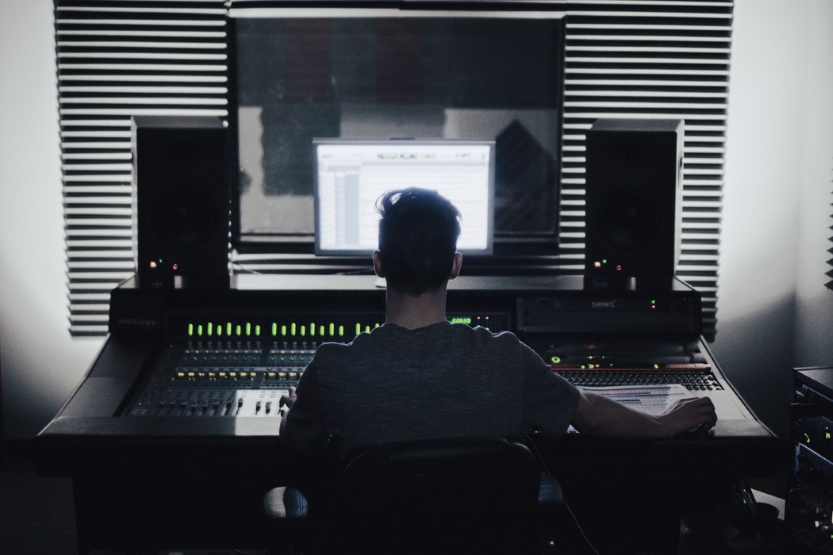
Once you’ve read our guide on how to prepare for a mixing session, it’s time to get started. Here are some mixing tips for your home studio that will make your songs shine. This guide will go through the following:
- Volume, compression, and EQ
- Reverb and delay
- Reference tracks
- Collaboration
- Things a mix can’t fix
- How to listen back to your mix
Less is More
I’ve picked up a lot of wisdom from The Recording Revolution on YouTube. Among the many gems I’ve learned from Graham Cochrane is that less is more. Stick to the basics when mixing: Volume, EQ, and compression.
Volume
Adjust the volume for each track before adding any plugins at all. Pretend that you can only mix the song by adjusting volume. Try getting it as good as you can with just the faders.
Compression
Add some mild compression to the mix track. All your tracks will need some form of compression. Putting a compressor on the mix track will add that compression to all the tracks. But make it light. You’ll still be adding individual compressors to some or most of your tracks later. I prefer adding compression before EQ because it makes it easier to cut out the bad frequencies.
EQ
Use subtractive EQ first. Run across the frequency spectrum and identify the ranges that sound bad. Subtract a few dB from those ranges to get a cleaner sound. Whether or not you slap on another EQ to add some frequencies is a matter of taste.
Save Delay and Reverb for Last
Rockstars are made from reverb and delay effects. But they should be seen as the icing on the cake of your mix, rather than the cake itself. Reverb and delay is the glue that makes everything blend nicely. But since they make sounds longer, it will also make it more difficult for you to mix your song. Save reverb and delay for last, and then make some final adjustments.
Use a Reference Track
Professionally recorded, mixed, and mastered music sounds fantastic. The pros know what they’re doing, and there’s no shame in emulating what you hear. Find a good reference track in the same genre as your song. Drag and drop it onto the arrangement window, and compare your mix to the reference track regularly.
Listen to Your Mix On Multiple Systems
You’ll likely have a pair of monitors and a pair of headphones as part of your home studio. Those are great for getting the overall sound right. However, it’s worth bearing in mind that your listeners won’t have the same equipment. They’ll listen to your music in their car, on their fancy Beats by Dre, and their (gasp!) laptop speakers. You should do the same. Many regular speakers and headphones will cut frequencies from your mix mercilessly. If your mix hasn’t taken them into account, it just might get ruined. So take your precautions and listen to your mix on non-rockstar systems.
Always Experiment
Many of us get too comfortable once we’ve learned enough about audio engineering to get a half-decent mix. We get distracted by making songs and then applying the same old mixing techniques to all of them. The result is mediocre mixes. Although there are many rules of thumb you can use in all mixes, every song is unique. Every mix should be unique too. Play around to find out what a particular song needs. Experiment, look up tutorials and try something new. You just might go up a level.
Stop, Collaborate, and Listen
Music is a social activity. Unless your sole ambition is to serenade the moon from your balcony, you should collaborate with others. It doesn’t have to be in the rehearsal room. Invite your friends over for a mixing session and stock up on some cold ones. Having other opinions can influence the way you mix and improve the result.
Mixing Can’t Fix Everything
You can’t turn a lousy recording into a great sounding mix. Sometimes you’ve got to return to the source. Here’s a list of problems a mix can’t fix:
- Out-of-tune instruments
- Bad rhythm
- Rattling strings
- Recording that clip
- Background noises
- Headphone bleed
- Tired vocalists
The hard naked truth is that you’ll have to go back to the drawing table. And by drawing table, I mean recording station.
Finish Your Mix Tomorrow
It takes time to get a good mix. More time than you have today. Even if you’ve blocked out the entire day to mix your track, it won’t be done today. Sorry. Your ears will get tired as you spend hour after hour mixing. It’s good to take regular breaks, but it’s not enough. Do as much as you can, and then let it marinate until the morning. Listen with fresh ears, and give it the final polish.


